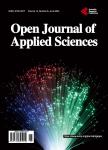Model Associated with the Study of the Degradation Based on the Accelerated Test: A Literature Review
Model Associated with the Study of the Degradation Based on the Accelerated Test: A Literature Review作者机构:Laboratory of Semiconductor and Solar Energy Department of Physics Faculty of Science and Techniques University Cheikh Anta Diop Dakar Senegal
出 版 物:《Open Journal of Applied Sciences》 (应用科学(英文))
年 卷 期:2016年第6卷第1期
页 面:49-63页
主 题:Degradation Acceleration Factor Arrhenius Relationship Eyring Relationship Inverse Power Relationship Voltage-Stress Photodegradation
摘 要:Most manufacturers of solar modules guarantee the minimum performance of their modules for 20 to 25 years, and 30-year warranties have been introduced. The warranty typically guarantees that the modules will perform to at least 90% capacity in the first 10 years and to at least 80% in the following 10 - 15 years. Early degradation resulting from design flaws, materials or processing issues is often apparent from startup to the first few years in service. Importantly, many module failures and performance losses are the result of gradual accumulated damage resulting from long-term outdoor exposure in harsh environments, referred. Many of these processes occur on relatively long time scales and the various degradation processes may be chemical, electrical, thermal or mechanical in nature. These are either initiated or accelerated by the combined stresses of the service environment, in particular solar radiation, temperature and moisture, and other stresses such as salt air, wind and snow. Accelerated Life Testing (ALT) test methodology is normally predicated on first being able to reproduce a specific degradation or failure mode without altering it (correlation);and, second, to produce that result in less than real-time acceleration. Degradation and failure may result when an applied stress exceeds material or product strength. This may be a one-time catastrophic event, the result of cyclic fatigue, or a gradual decline in requisite properties due to ageing mechanisms. Engineers in the manufacturing industries have used accelerated test (AT) experiments for many decades. The purpose of AT experiments is to acquire reliability information quickly. Test units of a material, component, subsystem or entire systems are subjected to higher-than-usual levels of one or more accelerating variables such as temperature or stress. Then the AT results are used to predict life of the units at use conditions. The extrapolation is typically justified (correctly or incorrectly) on the



